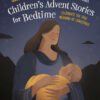
Gail Gaymer Martin
Welcome to the CAN Blog from Gail Gaymer Martin @ www.gailgaymermartin.com. Today I decided to talk about one way my writing has changed in the past few years. Although I wrote about places I knew, I didn’t worry about accuracy and often I used a fictitious location so I didn’t have to worry about accuracy.
Writing Fiction Using Real Locations
But over time, I learned if I want to write real, I needed to visit the location of my novel. While creating a fictitious location can be easier, I’ve found that fans love to read about real places since they often relate to them as a place they lived or visited. I’ve also learned real places offer bonuses as I researched.
Bonus 1 -Realistic Details
My writing is known for realistic characters and locations that bring my stories to life. For the last few years, I’ve used real towns for my novels. When I use a fictitious street or home description, I usually pattern it after one that is real. By researching real location, authors can take photos, note impressions, involve the senses and later can recall their reaction and experience. This can add reality to their novels. When I do Internet research, the photos and information also come to life.
Bonus 2 – Simulating Plot Ideas
 While researching a town, authors can learn town history, sights, events and activities that help stimulate story ideas. Recently, I spent two days in the small town of Owosso. Though a lifelong resident of Michigan, I’ve never had reason to visit this mid-state town. My publisher, Love Inspired, enjoys stories set in rural areas and small towns, making Owosso perfect. This town has its own castle, built by a 1920s novelist, James Curwood, to use as his writing sanctuary.
While researching a town, authors can learn town history, sights, events and activities that help stimulate story ideas. Recently, I spent two days in the small town of Owosso. Though a lifelong resident of Michigan, I’ve never had reason to visit this mid-state town. My publisher, Love Inspired, enjoys stories set in rural areas and small towns, making Owosso perfect. This town has its own castle, built by a 1920s novelist, James Curwood, to use as his writing sanctuary.
With children in some of my novels, learning about Owosso’s three Playscape venues was a find. Two of these areas provide a kid’s splash pool, slides, swings, rock wall, rope brides, a pavilion and gazebo. One Playscape is located at the DeVries Nature Conservatory and gives children opportunities to study nature in a hands-on activities. Owosso also has a sled hill for winter fun. The town has a Steam Railroading Institute, an art gallery, a conference center, sleigh museum, community actors and theater, numerous community festivals and events, and a nearby town that has a historic village. People can roller skate, bowl and shop in a four street area, and the town is filled with restaurants and churches. All of these features triggered ideas for novels in the Lilac Circle Series.
Bonus 3 – Making Contacts
The Chamber of Commerce is the location of the woman who is in charge of all city events. She graciously took me on a tour of some of the cities features. We drove through residential areas where I located the street I called Lilac Circle, featuring characters from my series. We went to the nearby town of Corunna to visit their Playscape in McCurdy Park where characters will find Sled Hill, the historic village and the county Courthouse which is part of the first book, Unexpected Mommy, a 2015 release. Through my contact I learned about holiday events and their details, such as: Christmas, Easter egg hunt, 4th of July celebration and other unique city festivals and celebrations.
I also learned the local newspaper is privately owned and is open to carrying local articles that would interest the town’s residence. I am hopeful I can receive some press when my book series is released. Another contact was the Owosso Bookstore where they are interested in carrying my books when released. I offered to do a book signing. These personal contacts provide individuals to call for answers to question not found through research.
Bonus 4 – Tax Deductible
The cost for a research trip is travel expenses which are tax deductible. The benefits are high: realism, idea stimulation, contacts and the ability to feel, taste, touch, smell, hear and see the location of your story.
Yes, you can fabricate a town, and you must if it’s speculative, but visiting a town is a far greater investment especially for contemporary fiction, as well as historical fiction which is heightened by walking the fields of Gettysburg, exploring a real plantation, seeing migrant workers and where they live. How can a writer imagine looking at Paris from the top of the Eiffel Tower or riding in a gondola on the Grand Canal without experiencing it? I have, and so could you.
(c) Gail Gaymer Martin 2017



Kathy Kovach
March 10, 2017 - 12 : 29 : 38Hi, Gail! Love your books, and love your teaching. I’ve been in several classes that you’ve taught in the past decade. This article is well-timed. I’m writing a novella set in Estes Park, CO in 1910. The backdrop is the struggle of forming Rocky Mountain National Park. So far, I’ve renamed the town so I can have creative license, but everyone is going to know it’s based on Estes due to the subject matter. I’ve gone back and forth on whether I should give it a fictitious name (Mills Park to honor Enos Mills, considered the “Father of Rocky Mountain National Park”) or just bite the bullet and keep it all real. Estes is a stone’s throw from where I live so in person research is no problem. What do you think? Would it throw the reader off if I have a fictitious name but then mention RMNP?